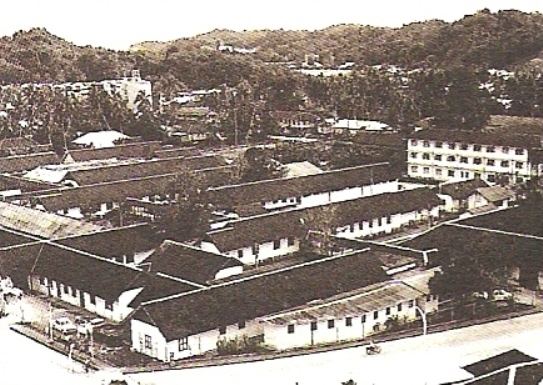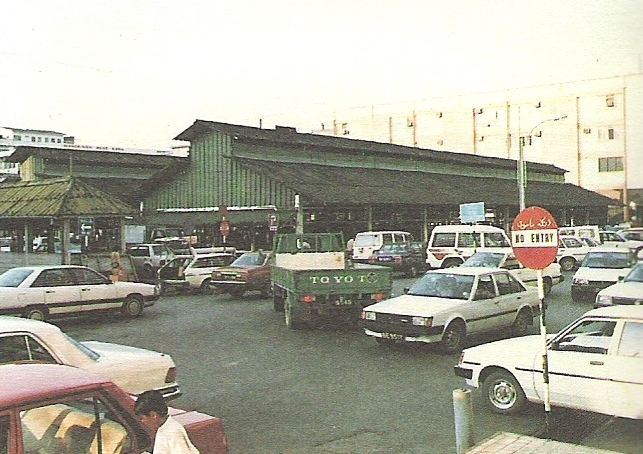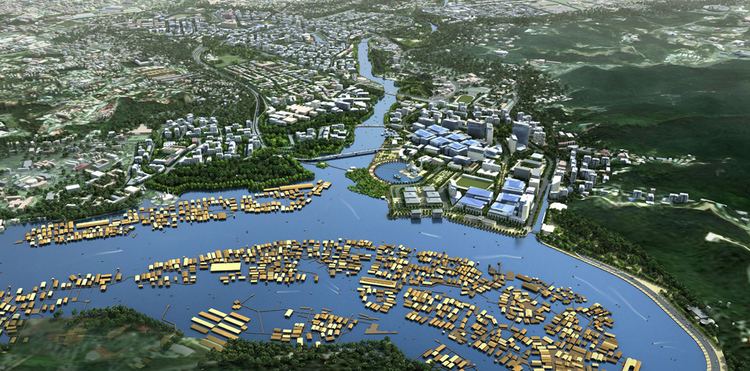Country Population 27,285 (2001) Area 100.36 km2 | District Brunei Muara | |
Points of interest Sultan Omar Ali Saifuddin Mosque, Istana Nurul Iman, Brunei Museum, Malay Technology Museum, Sultan Hassanal Bolkiah Stadium Colleges and Universities Universiti Brunei Darussalam, Seri Begawan Religious Teachers University College, Institut Teknologi Brunei, Universiti Islam Sultan Sharif Ali, Sultan Saiful Rijal Technical College | ||
Bandar Seri Begawan BA(H)ND-? s?-REE b?-GOW-?n (Jawi: ???? ??? ?????? ) formerly known as Brunei Town, with an estimated population of more than 200,000 (in 2014), is the capital and largest city of the Sultanate of Brunei.
Contents
- Map of Bandar Seri Begawan
- Driving around bandar seri begawan brunei
- History
- Geography
- Places of interest
- Economy
- Museums
- References
Map of Bandar Seri Begawan
Driving around bandar seri begawan brunei
History

Human settlement in Brunei can be traced back as far as 6th and 7th century with Malay trading centre and fishing port located near the current site of this city. The first settlement on the banks of the Brunei River can be traced back to the 8th century where there had been settlements similar to those in Kampong Ayer, located near the present site of the Brunei Museum with the modern city on the opposite shore. During the Bruneian Empire period from 15th-17th century, the Sultanate ruled much part of Borneo including the southern part of the Philippines and its capital of Manila, with the water settlement near the city area became the third centre of the administration after been moved twice from Kota Batu and Kampong Ayer. When the Sultanate rule declined through the eighteenth century due to the arrival of western powers such as the Spanish, Dutch and the British, this settlement population was totally decreased from its peak of 20,000 inhabitants. From 1888 until its independence in 1984, Brunei had became a British protectorate and land development began in 1906 when the British resident encouraged the Sultanate citizens to moved on a reclaimed land on the western bank of the inlet. Sultan Muhammad Jamalul Alam II established a new palace on the west bank in 1909 after been persuaded by the British, along with the arriving of Chinese traders to boost the its economy. Mosque and government buildings was also built along the western shores in 1920. In the same year, the new settlement was declared as a new capital of Brunei and became a municipal area.

However, the city prosperous was almost over when the city been captured by the Japanese in 1941 before been recaptured back by the Allied forces in 1945. During the war, most infrastructures were destroyed either by Japanese or Allied bombs. But the British doing a lot to reconstruct most of its possession in Borneo at the end of 1945 with law order been restored and the reopening of schools. Already in 1950, Sultan Omar Ali Saifuddien III negotiated with the British at the start of his accession to the throne for an increase in corporate taxes, from 10% to 30% in 1953. An M$1.2 million (US$0.39 million) allotted to Brunei for war damages during the Japanese occupation, increasing from M$1 million in 1946 to M$100 million (US$32.6 million) in 1952. A five-year development plan with a total budget of (M$100 million) was also implemented in 1953, with infrastructures received the most part of 80% and another 20% for social programmes. Together with the expansion of oil and gas industry, the industry has began to transform Bruneis capital and a large number of public buildings was then constructed along with the development of central business district from 1970s and 1980s. On 1 August 2007, Sultan Hassanal Bolkiah gave consent for the extension of the city from 12.87 km2 (4.97 sq mi) to 100.36 km2 (38.75 sq mi). The list of the included villages and mukims can be seen on the expansion section below.
Geography

Bandar Seri Begawan is located at 4°5325"N, 114°5632"E, on the northern bank of the Brunei River.
Places of interest
Economy
The city produces furniture, textiles, handicrafts, and timber. Royal Brunei Airlines, the national airline, has its head office in the RBA Plaza in the city.
